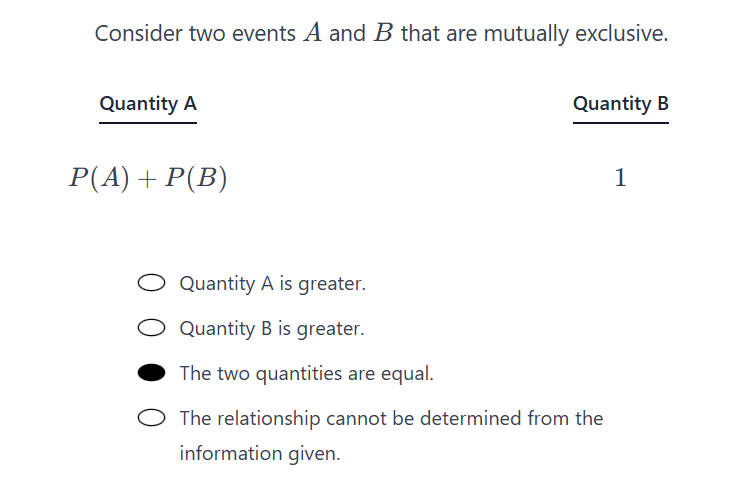Hello,
I have two questions.
-
Why is option C wrong? When the intersection is 0, the sum of the two becomes 1 because they refer to an event where they cannot occur together, so their sum is definitely 1. For example, either a girl or a boy, or in the case of a die, either a 1 or a 6. In the context of independent events, since the two events were different, their sum could be less than, equal to, or greater than 1. However, in mutually exclusive events, this is impossible!
-
I know there’s a formula that says the probability of A and B, when multiplied, equals the probability of both occurring together. But why does the Venn diagram result in 0.2?? The intersection is 0.2, the part of A without the intersection is 0.6, and well, now their sum should be 1, so the event of only B becomes 0.2! But the answer is 0.25.

